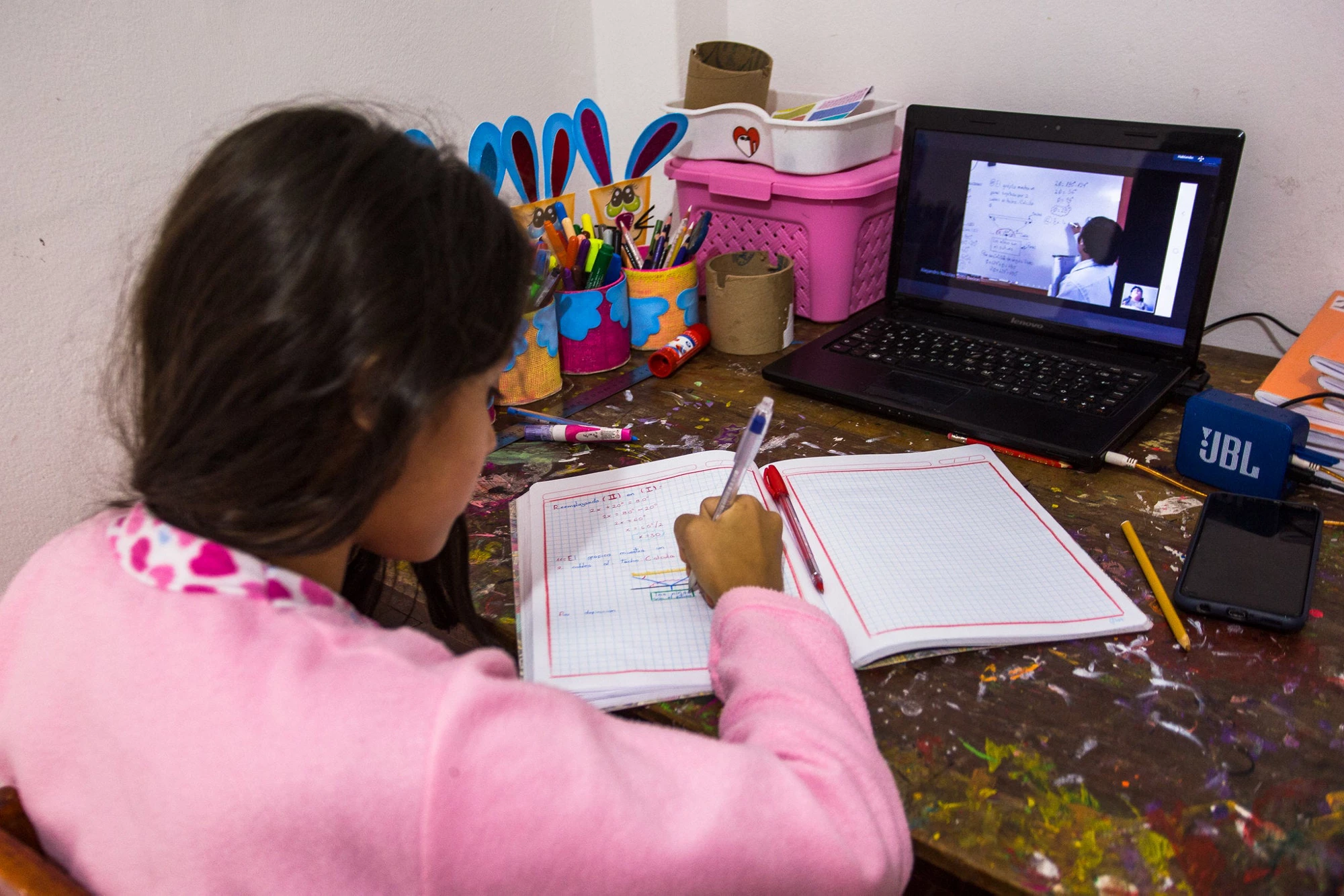Why is digital development key for inclusive green growth in Latin America and the Caribbean?
The COVID-19 crisis has shed light on the central role that digital infrastructure and technologies play in our modern societies . It is saving lives through digital health, helping schools provide continuity of learning, and supporting governments, individuals and businesses cope with social distancing.
But gaps in access can exacerbate inequalities and exclusion. The pandemic has revealed a surprisingly low access to these digital technologies in Latin America and the Caribbean . While over 90% of the population was covered by broadband networks before the crisis, actual subscribers to mobile broadband service were low at 53% and fixed broadband household penetration was only 46%.
As the region is ramping up access to digital services, we would like to bring your attention to the role of these technologies for a more sustainable future, through higher safety, efficiency, and new growth models, but also to the need to ensure that everyone will benefit.
On the efficiency side, gains are crystal clear. At government level, digitalization and open data enables sharing data between public agencies and increasing efficiency of providing public services . In disaster risk management, access to real time data during disasters can make a huge difference in getting a fast, accurate assessment of physical damages. Using digital approaches, the World Bank team estimated damages in the Bahamas from the 2019 Hurricane Dorian in just two weeks, compared to six months for the usual on-the-ground assessments. Satellite imagery can also help predict floods and drought, and monitor deforestation. Efficiency gains are huge for utilities and the private sector too. For water utilities, smart sensors, meters, networks and apps can help capture daily consumption and operational information and allow utilities to optimize operation and maintenance, energy efficiency, and reduce water losses.
Digitalization also enables higher safety and quality of goods and services. For example, digital technologies allow tracing food throughout the supply chain in a decentralized manner, for safer, more sustainable food. In Uruguay, the government was farsighted in responding to a Foot and Mouth disease epidemic in the early 2000s with improved livestock management and the development of a digital information system for livestock information. Uruguay was then able to use this system to certify the quality of beef production, to respond to shifts in demand for higher quality, sustainable beef. It has paid off with a 700% increase beef exports from 2001 to 2018.
Digital technologies can also be fundamentally disruptive. For example, they can have profound impacts on economic geography and territorial development if many people can work from home while supply chains transition to highly decentralized delivery of information, goods, and services directly to people’s homes. The ‘hardest to reach’ for healthcare, for example, may no longer be the geographically isolated, but those disconnected from digital.
Finally, if deployed well, digital technologies can improve inclusion by providing more services to those with physical disabilities and by giving a voice to historically excluded population . In practice however, efforts remain to ensure that everyone has the access and skills to use the new digital opportunities. For example, in Haiti our team considered using mobile payments to provide emergency cash-transfers to the most vulnerable in urban areas. However, the team realized that many of the poorest urban dwellers did not have cellphone access and using digital technologies would have left them out. Increase in inequalities can also come from the decentralization of infrastructure services allowed by new technologies. This decentralization allows richer people to buy the service directly from the private sector and thereby get around large-scale infrastructure networks and the cross-subsidies that historically benefitted poorer users.
How do we make sure that innovation works for the poor, and that the efficiency gains and disruptions deliver more inclusive development?
The answer lies in governments’ ability to provide access to all, protect freedoms, and redistribute the gains from digitalization. Here are three priorities for governments:
- Target the poorest and most excluded populations when ramping up access to infrastructure and mobile services. In Uruguay, a program that offers a laptop and Internet to public school children has provided computers to 64.4 % of the poorest quintile.
- Build capacity within national and local governments to understand new tech-enhanced systems and maintain a dialog between experts and regulators. Mexico City created “la agencia digital de innovación pública”, an agile team staying up-to-date on technology and in touch with citizens, to support innovations in government, the private sector and civil society.
- Protect customers data privacy. There is a tension between open-data standards and data protection. To maximize the power of “big data,” the more that is shared, the better —although data sharing may infringe on data privacy expected by customers.
Capitalizing on the power of digital technologies can bring the efficiency and safety critical to our sustainable future . Targeting support to the poorest and excluded, building government capacity, and protecting the privacy of individuals will help assure that it is a sustainable future for all.




Join the Conversation